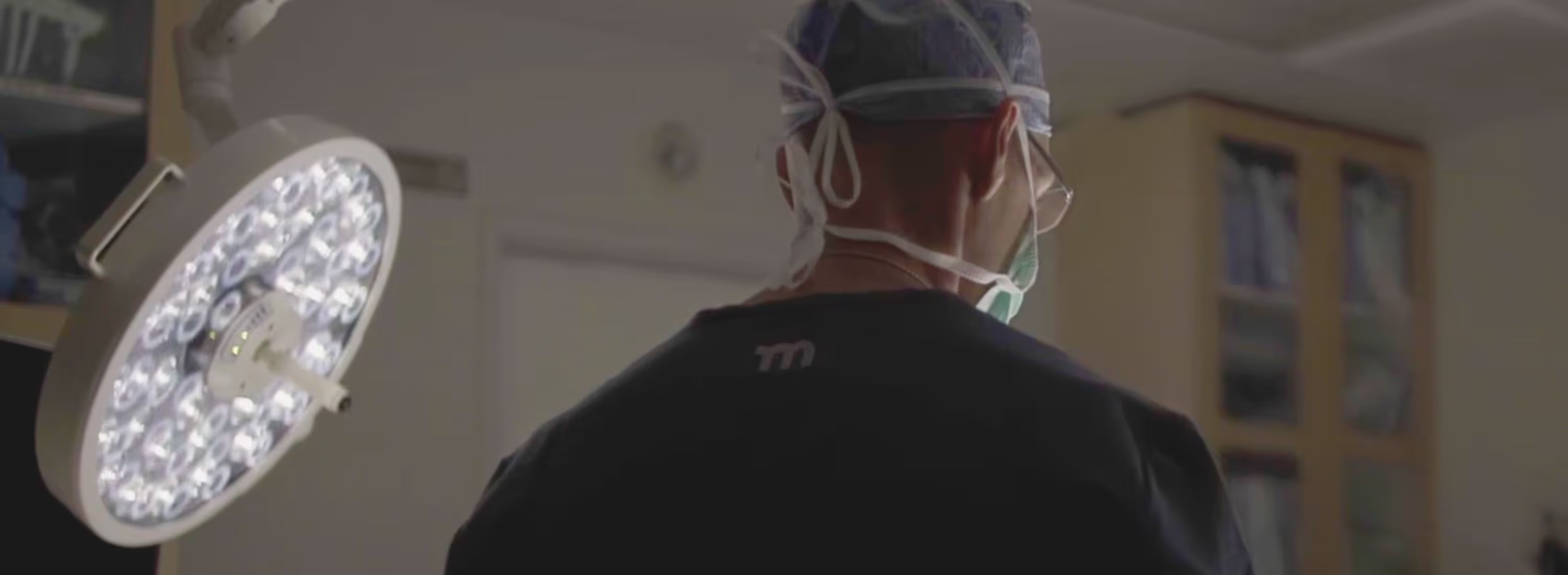
Deeply Infiltrating Endometriosis
When deeply infiltrating endometriosis affects the ovaries and leads to the formation of endometriomas (chocolate cysts), an ovarian cystectomy can restore ovarian health and reduce pain. Dr. Siedhoff performs this procedure using robotic laparoscopy or conventional laparoscopy for a precise, minimally invasive approach that supports fertility, minimizes scarring, and promotes long-term symptom relief. Additional procedures that can treat this condition include ureterolysis, lysis of adhesions, rectal shaving, discoid resection, low anterior bowel resection, appendectomy, supracervical hysterectomy, total hysterectomy, or oophorectomy.

Stage 3 or Stage 4 Endometriosis
An ovarian cystectomy is often needed to remove large or multiple endometriomas that compromise ovarian function and cause significant pain. Robotic laparoscopy or conventional laparoscopy techniques offer a minimally invasive approach to remove the cysts while reducing surgical trauma, supporting fertility, and helping restore comfort and quality of life. Other treatment options for advanced-stage endometriosis include excision of endometriosis, ureterolysis, lysis of adhesions, rectal shaving, discoid resection, low anterior bowel resection, appendectomy, supracervical hysterectomy, total hysterectomy, or oophorectomy.

Colorectal (Bowel) Endometriosis
When colorectal endometriosis is present alongside ovarian endometriomas, treating both conditions in a single surgery can provide comprehensive relief and improve long-term outcomes. Dr. Siedhoff avoids the need for multiple surgeries by removing ovarian cysts in a streamlined approach, using robotic laparoscopy or conventional laparoscopy. Other treatments for bowel endometriosis include excision of endometriosis, ureterolysis, lysis of adhesions, rectal shaving, discoid resection, low anterior bowel resection, and appendectomy.

Ovarian Endometrioma
Women with ovarian endometriomas benefit from ovarian cystectomy, which can relieve pain, improve ovarian function, and lower the risk of cyst recurrence. Dr. Siedhoff performs this procedure using robotic laparoscopy or conventional laparoscopy, meticulously removing the cyst wall with a minimally invasive technique that supports fertility, minimizes scarring, and promotes long-term pelvic health. Depending on the nature of the cysts, different treatments may be recommended, including excision of endometriosis, ureterolysis, lysis of adhesions, intra-ovarian platelet-rich plasma (PRP) injection, or an oophorectomy.

Ovarian Cysts
For ovarian cysts that cause pain, menstrual irregularities, or fertility challenges, an ovarian cystectomy can restore normal function and provide lasting relief. Using robotic laparoscopy or conventional laparoscopy, cysts can be removed while protecting healthy ovarian tissue and preserving hormonal balance. Ovarian cysts can also be treated with a minimally invasive oophorectomy.

Infertility
When ovarian cysts interfere with ovulation or disrupt the reproductive environment, an ovarian cystectomy can help improve fertility outcomes. Using robotic laparoscopy, conventional laparoscopy, or, in select cases, hysteroscopy, Dr. Siedhoff can optimize ovarian function, support conception, and minimize recovery time. Depending on the exact cause of infertility, more minimally invasive surgical treatments can be beneficial, including myomectomy, excision of endometriosis, salpingectomy, lysis of adhesions, or uterine isthmocele repair.

Cervical Insufficiency
In rare cases where large ovarian cysts contribute to pelvic structural changes that impact cervical support, an ovarian cystectomy can restore balance and reduce the risk of cervical insufficiency during pregnancy. Dr. Siedhoff performs this procedure using robotic laparoscopy or conventional laparoscopy for the most precise and minimally invasive approach. Other treatment options for cervical insufficiency include trans-abdominal cerclage, myomectomy, excision of endometriosis, salpingectomy, lysis of adhesions, and uterine isthmocele repair.
.svg)

.svg)

.svg)









.png)

.png)

.png)
